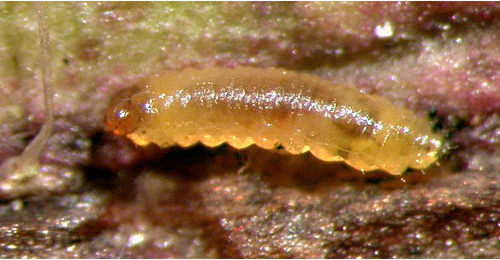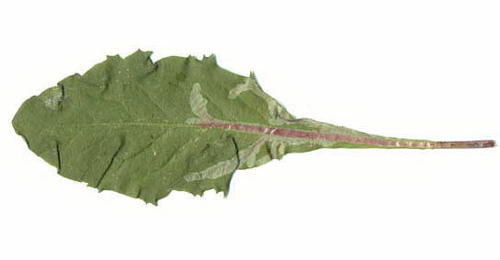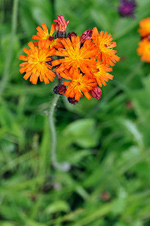|
||||||
|
PILOSELLA. Mouse-ear-hawkweeds. [Asteraceae] |
|
|
Twenty species and subspecies of Pilosella are recorded in Britain. Six British miners are recorded on Pilosella. A key to the European miners recorded on Hieracium including Pilosella is provided in Bladmineerders van Europa. |
|
Key for the identification of the known mines of British |
1# > ? Leaf-miner: Details unknown. |
|
Oxyptilus pilosellae (Zeller, 1841) [Lepidoptera: Pterophoridae]. |
1a > Leaf-miner: A distinctive mine primarily above mid-rib, with irregular short lateral offshoots into leaf blade. Pupation external (Spencer, 1972: 51 (fig. 172), 55; Spencer, 1976: 270, 271 (fig. 486)). Branched, whitish, upper-surface corridor; main axis overlying the midrib; side branches overlying the main lateral veins. (In Campanula and Phyteuma the mine is much less branched, sometimes nothing more than a corridor on top of the midrib). Frass in rather long strings. Usually the mines begins as a long and narrow, shallow, tortuous lower-surface corridor that ends upon the midrib but otherwise is not associated with the leaf venation. Often this initial corridor is filled with callus, and then even less conspicuous. Pupation outside the mine. A linear mine on the upper surface, usually following the midrib and showing side branches along the veins. The frass is in strings. |
|
Liriomyza strigata (Meigen, 1830) [Diptera: Agromyzidae]. |
1b > Leaf-miner: The mine begins in the midrib, especially in a lower leaf, extending into the leaf disc, branching irregularly or pinnately, may also locally be blotch like. The mine is brown and very transparent. Sides very irregularly eaten out. Frass loosely dispersed or in a loose central line, buy may also be pressed against the sides of the corridor. The larva may also leave the mine and restart elsewhere. |
 Orthochaetes setiger larva, dorsal Image: © Jean-Yves Baugnée (Bladmineerders van Europa) |
|
Orthochaetes setiger (Beck, 1817) [Coleoptera: Curculionidae]. |
1c > Leaf-miner: A whitish blotch-mine along the mid-rib, with lateral offshoots into the leaf blade. Pupation at base of leaf in petiole (Spencer, 1972b: 25). Broad corridor overlying the midrib, with short excursion into the blade, mainly in its basal part. Frass concentrated in the basal part of the mine, corridors almost free from frass. Pupation in the mine, also in the basal part. |
 Mine of Ophiomyia pulicaria on Taraxacum officinale Image: © Willem Ellis (Bladmineerders van Europa) |
|
Ophiomyia pulicaria(Meigen, 1830) [Diptera: Agromyzidae]. |
1d > Leaf-miner: Larva mining both lower and upper surface, unusually long, linear, conspicuously broad, frequently largely on the underside of the leaf. Pupation external (Spencer, 1972b: 76 (fig. 251); Spencer, 1976: 445 (fig. 780), 446). Corridor mine. The first part consists of a very long and narrow lower-surface corridor; the mine is quite shollow here, and often inconspicuous. The second part is upper-surface, uusally much shorter, and widens abruptly. Pupation outside the mine. |
|
Phytomyza marginella Fallén, 1823 [Diptera: Agromyzidae]. |
1e > Leaf-miner: Mine mainly in basal leaves, running along mid-rib, with short lateral offshoots into leaf blade (Spencer, 1972b: 71). Pupation takes place within the petiole or mid-rib (Spencer, 1976: 489). Upper-surface corridor in the leaf base, radiating from the base of the midrib. Frass in long strings along the sides of the mine. Primary feeding lines quite conspicuous. Pupation within the mine, in the leaf base or even deeper in the plant. |
|
Phytomyza rufescens von Roser, 1840 [Diptera: Agromyzidae]. |
| Last updated 06-Jul-2019 Brian Pitkin | ||

